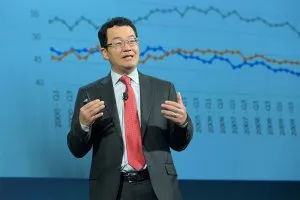- Economic growth was feeble in the final quarter of 2015, rising only 0.7 percent. One bright spot, however, was the housing sector, which through new home construction and rising home sales drove housing investment to rise by 8.2 percent. It will be the housing sector growth that will keep the U.S. economy to avoid recession and growing, albeit, sluggishly in 2016.
- Breakouts by specific sectors are as follow:
- Consumer spending grew by 2 percent
- Business spending did not grow
- Residential investment grew by 8 percent
- Government spending rose by 1 percent
- Exports fell by 2 percent
- Imports rose by 1 percent
- Business inventory grew, reflecting more production than sold items
- The combined total GDP grew by 0.7 percent.
- For the year as a whole in 2015, GDP expanded by 2.4 percent. This would mark the 10th consecutive year of subpar economic expansion of being less than the historical normal growth rate of 3 percent. A direct financial consequence of multiple years of slow economic growth versus what the economy would be had the economy only been normal (rising 3 percent a year), is a $1.7 trillion shortfall in national income. With 320 million people living in the country, it translates into roughly a $5,000 per person per year shortfall. The resulting economic anxiety can fuel populist demand for outside-of-establishment political candidates to get traction and votes.
- Aside from the slow 2015 GDP growth, the economy woke up on the wrong side of bed in 2016. GDP growth is expected to be even slower, rising only 1.0 to 1.5 percent in 2016. Fortunately, it is the growth in new home construction and the resulting income generations that will keep the U.S. from avoiding a recession. Slow growth is still a growth and will lead to about 1.5 million net new job additions this year.
- As an aside, there are some activities that we consume for free that are not counted in GDP. Technology has permitted us to enjoy many free internet contents and YouTube videos. These free activities do not generate income and hence are not part of GDP accounting. Nonetheless, we can take some consolation that few additional enjoyments are added to life despite slow economic expansion.











